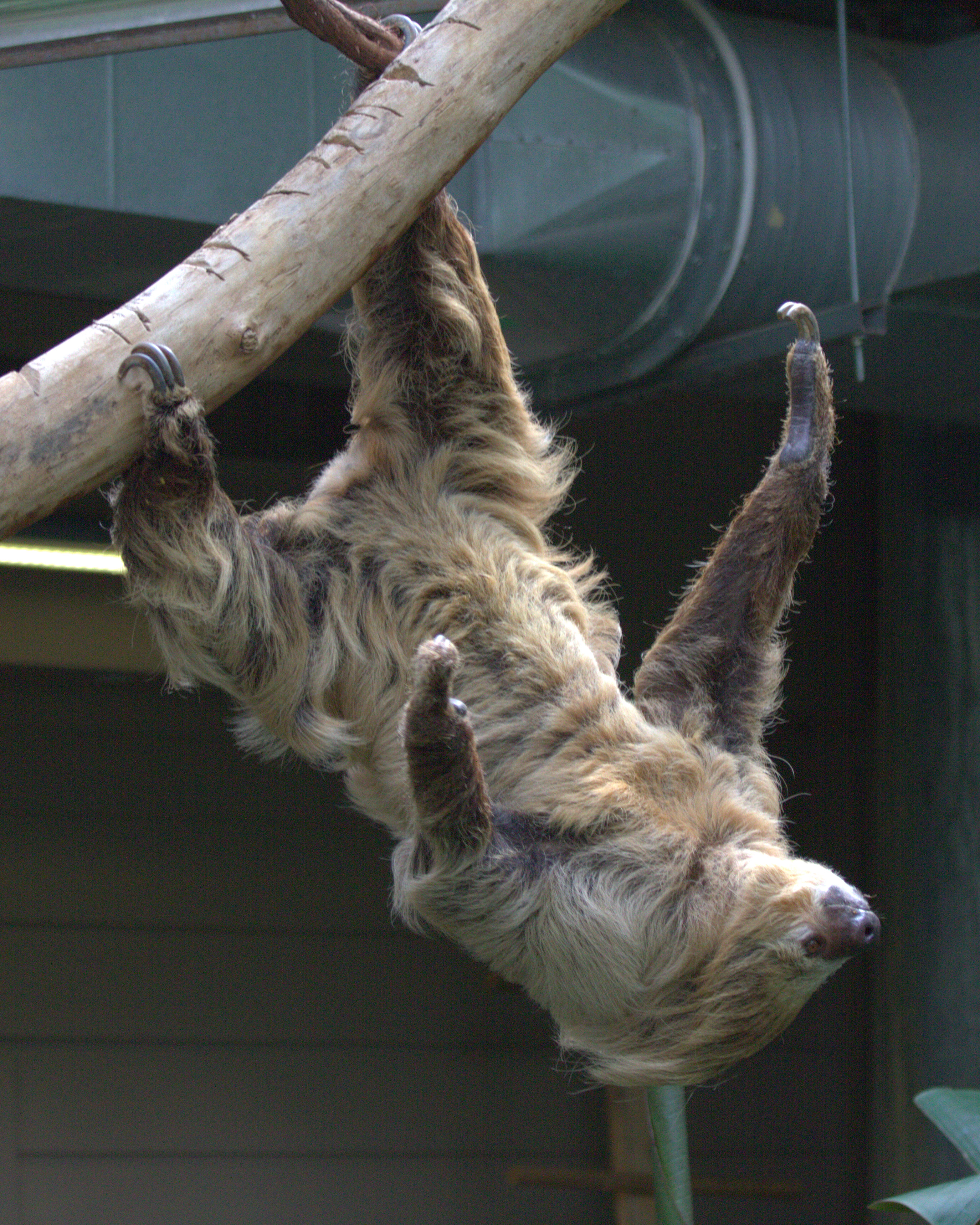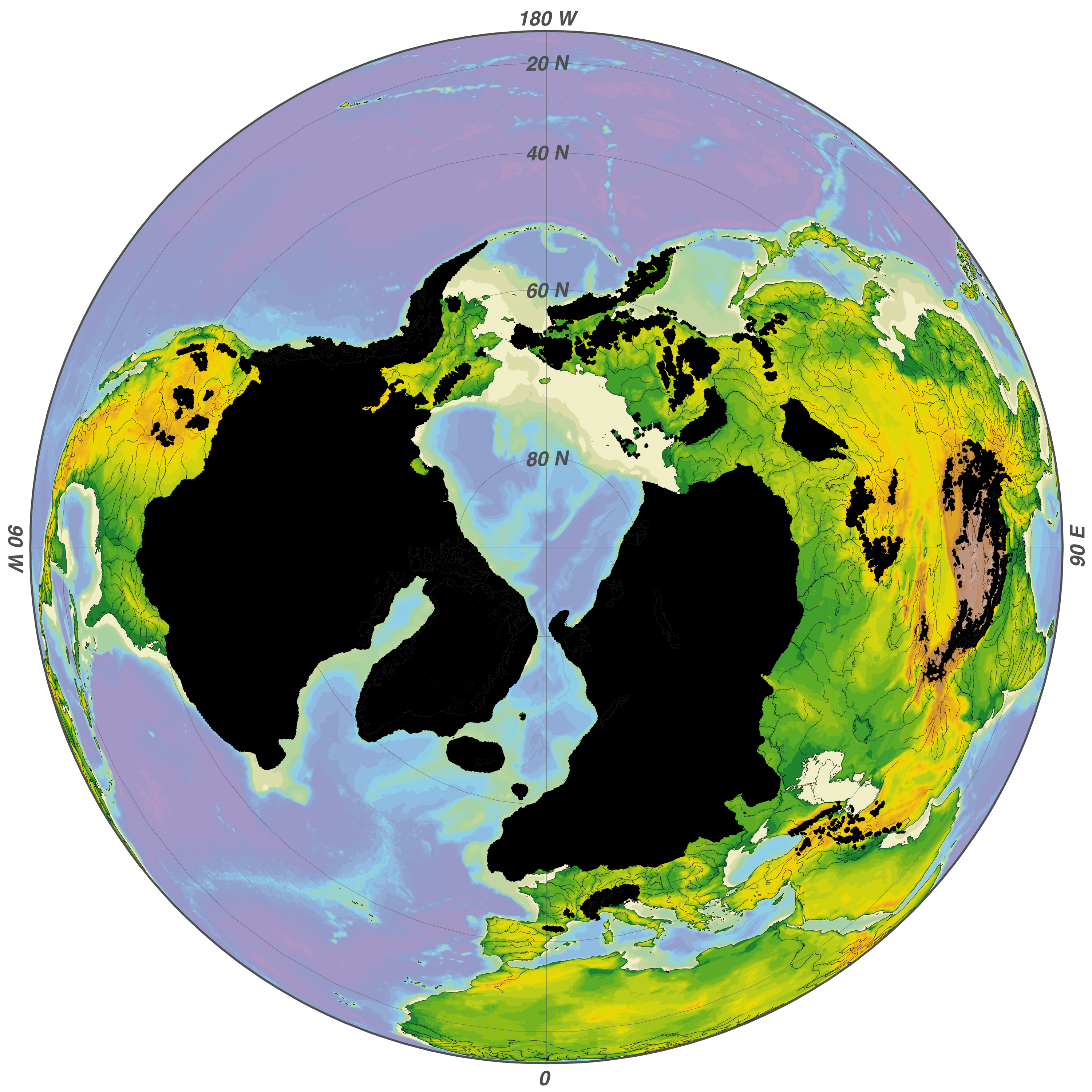|
Megalonychidae
Megalonychidae is an extinct family of sloths including the extinct ''Megalonyx''. Megalonychids first appeared in the early Oligocene, about 35 million years (Ma) ago, in southern Argentina (Patagonia). There is, however, one possible find dating to the Eocene, about 40 Ma ago, on Seymour Island in Antarctica (which was then still connected to South America). They first reached North America by island-hopping across the Central American Seaway, about 9 million years ago, prior to formation of the Isthmus of Panama about 2.7 million years ago (which led to the main pulse of the Great American Interchange). Some megalonychid lineages increased in size as time passed. The first species of these were small and may have been partly tree-dwelling, whereas the Pliocene (about 5 to 2 million years ago) species were already approximately half the size of the huge Late Pleistocene ''Megalonyx jeffersonii'' from the last ice age.J.L. White (1993) It was formerly believed, based on morphol ... [...More Info...] [...Related Items...] OR: [Wikipedia] [Google] [Baidu] |
Two-toed Sloth
''Choloepus'' is a genus of xenarthran mammals from Central and South America within the monotypic family Choloepodidae, consisting of two-toed sloths, sometimes also called two-fingered sloths. The two species of ''Choloepus'' (which means "lame foot" in Ancient Greek), Linnaeus's two-toed sloth (''Choloepus didactylus'') and Hoffmann's two-toed sloth (''Choloepus hoffmanni''), were formerly believed on the basis of morphological studies to be the only surviving members of the sloth family Megalonychidae, but have now been shown by molecular results to be closest to extinct ground sloths of the family Mylodontidae. Extant species Evolution A study of retrovirus and mitochondrial DNA suggests that ''C. didactylus'' and ''C. hoffmani'' diverged 6 to 7 million years ago. Furthermore, based on cytochrome c oxidase subunit I sequences, a similar divergence date ( years ago) between the two populations of ''C. hofmanni'' separated by the Andes has been reported. Th ... [...More Info...] [...Related Items...] OR: [Wikipedia] [Google] [Baidu] |
Sloths
Sloths are a Neotropical realm, Neotropical group of xenarthran mammals constituting the suborder Folivora, including the extant Arboreal locomotion, arboreal tree sloths and extinct terrestrial ground sloths. Noted for their slowness of movement, tree sloths spend most of their lives hanging upside down in the trees of the tropical rainforests of South America and Central America. Sloths are considered to be most closely related to anteaters, together making up the xenarthran order Pilosa. There are six extant sloth species in two genera – ''Bradypus'' (three-toed sloths) and ''Choloepus'' (two-toed sloths). Despite this traditional naming, all sloths have three toes on each rear limb – although two-toed sloths have only two digits on each forelimb. The two groups of sloths are from different, distantly related families, and are thought to have evolved their morphology via parallel evolution from terrestrial ancestors. Besides the extant species, many species of ground sl ... [...More Info...] [...Related Items...] OR: [Wikipedia] [Google] [Baidu] |
Megalonyx Jeffersonii
''Megalonyx'' (Greek, "great-claw") is an extinct genus of ground sloths of the family Megalonychidae, native to North America. It evolved during the Pliocene Epoch and became extinct at the end of the Late Pleistocene, living from ~5 million to ~13,000 years ago. The type species, ''M. jeffersonii'' (also called Jefferson's ground sloth), the youngest and largest known species, measured about in length and weighed up to . ''Megalonyx'' is suggested to have descended from '' Pliometanastes,'' a genus of ground sloth that had arrived in North America during the Late Miocene around 9 million years ago, prior to the main phase of the Great American Interchange. ''Megalonyx'' had the widest distribution of any North American ground sloth, having a range encompassing most of the contiguous United States, extending as far north as Alaska during warm interglacial periods. ''Megalonyx'' is notable for having been originally described by future U.S. President Thomas Jefferson in 1799 ... [...More Info...] [...Related Items...] OR: [Wikipedia] [Google] [Baidu] |
South American Land Mammal Age
The South American land mammal ages (SALMA) establish a geologic timescale for prehistoric South American fauna beginning 64.5 Ma during the Paleocene and continuing through to the Late Pleistocene (0.011 Ma). These periods are referred to as ages, stages, or intervals and were established using geographic place names where fossil materials where obtained.Flynn & Swisher, 1995 The basic unit of measurement is the first/last boundary statement. This shows that the first appearance event of one taxon is known to predate the last appearance event of another. If two taxa are found in the same fossil quarry or at the same stratigraphic horizon, then their age-range zones overlap. Background South America was an island continent for much of the Cenozoic, or the "Age of Mammals". As a result, its mammals evolved in their own unique directions, as Australia and Madagascar still have today. Paleogeographic timeline A simplified paleogeographic timeline of South America: * 66 Ma – ... [...More Info...] [...Related Items...] OR: [Wikipedia] [Google] [Baidu] |
Megalocnidae
Megalocnidae is an extinct family (biology), family (alternatively considered to be a superfamily as Megalocnoidea) of sloths, native to the islands of the Greater Antilles from the Early Oligocene to the Mid-Holocene. They are known from Cuba, Hispaniola and Puerto Rico, but are absent from Jamaica. While they were formerly placed in the Megalonychidae alongside two-toed sloths and ground sloths like ''Megalonyx'', recent mitochondrial DNA and collagen sequencing studies place them as the earliest diverging group basal (phylogenetics), basal to all other sloths. or as an outgroup to Megatherioidea. They displayed significant diversity in body size and lifestyle, with ''Megalocnus'' being terrestrial and probably weighing several hundred kilograms, while ''Neocnus'' was likely arboreal and similar in weight to extant tree sloths, at less than 10 kilograms. Origin It is thought that sloths arrived in the Caribbean from South America (where they arose) around the Eocene-Oligocene ... [...More Info...] [...Related Items...] OR: [Wikipedia] [Google] [Baidu] |
Three-toed Sloth
The three-toed or three-fingered sloths are arboreal neotropical mammals. They are the only members of the genus ''Bradypus'' (meaning "slow-footed") and the family Bradypodidae. The five living species of three-toed sloths are the brown-throated sloth, the maned sloth, the pale-throated sloth, the southern maned sloth, and the pygmy three-toed sloth. In complete contrast to past morphological studies, which tended to place ''Bradypus'' as the sister group to all other folivorans, molecular studies place them nested within the sloth superfamily Megatherioidea, making them the only surviving members of that radiation. Extant species Evolution A study of mitochondrial cytochrome b and 16S rRNA sequences suggests that '' B. torquatus'' diverged from '' B. variegatus'' and '' B. tridactylus'' about 12 million years ago, while the latter two split 5 to 6 million years ago. The diversification of ''B. variegatus'' lineages was estimated to have started 4 to 5 million years a ... [...More Info...] [...Related Items...] OR: [Wikipedia] [Google] [Baidu] |
Megatheriid
Megatheriidae is a family of extinct ground sloths that lived from approximately 23 mya—11,000 years ago. Megatheriids appeared during the Late Oligocene (Deseadan in the SALMA classification), some 29 million years ago, in South America. The group includes the largest known ground sloths, the elephant sized ''Megatherium'' (given its name 'great beast' by Georges Cuvier) and ''Eremotherium''. An early genus that was originally considered a megatheriid, the more slightly built ''Hapalops'', reached a length of about . The nothrotheres have recently been placed in their own family, Nothrotheriidae. The skeletal structure of these ground sloths indicates that the animals were massive. Their thick bones and even thicker joints (especially those on the hind legs) gave their appendages tremendous power that, combined with their size and fearsome claws, provided a formidable defense against predators. The earliest megatheriid in North America was ''Sibotherium'' which arrived 5. ... [...More Info...] [...Related Items...] OR: [Wikipedia] [Google] [Baidu] |
Nothrotheriid
Nothrotheriidae is a family of extinct ground sloths that lived from approximately 17.5 mya—10,000 years ago, existing for approximately . Previously placed within the tribe Nothrotheriini or subfamily Nothrotheriinae within Megatheriidae, they are now usually placed in their own family, Nothrotheriidae. Nothrotheriids appeared in the Burdigalian, some 19.8 million years ago, in South America. The group includes the comparatively slightly built '' Nothrotheriops'', which reached a length of about . While nothrotheriids were small compared to some of their megatheriid relatives, their claws provided an effective defense against predators, like those of larger anteaters today. Evolution During the late Miocene and Pliocene, the sloth genus ''Thalassocnus'' of the west coast of South America became adapted to a shallow-water marine lifestyle. However, the family placement of ''Thalassocnus'' has been disputed; while long considered a nothrotheriid, one 2017 analysis moves it to M ... [...More Info...] [...Related Items...] OR: [Wikipedia] [Google] [Baidu] |
Thomas Jefferson
Thomas Jefferson (, 1743July 4, 1826) was an American Founding Fathers of the United States, Founding Father and the third president of the United States from 1801 to 1809. He was the primary author of the United States Declaration of Independence, Declaration of Independence. Jefferson was the nation's first United States Secretary of State, U.S. secretary of state under George Washington and then the nation's second vice president of the United States, vice president under John Adams. Jefferson was a leading proponent of democracy, republicanism, and Natural law, natural rights, and he produced formative documents and decisions at the state, national, and international levels. Jefferson was born into the Colony of Virginia's planter class, dependent on slavery in the colonial history of the United States, slave labor. During the American Revolution, Jefferson represented Virginia in the Second Continental Congress, which unanimously adopted the Declaration of Independence. ... [...More Info...] [...Related Items...] OR: [Wikipedia] [Google] [Baidu] |
Quaternary Glaciation
The Quaternary glaciation, also known as the Pleistocene glaciation, is an alternating series of glacial period, glacial and interglacial, interglacial periods during the Quaternary period that began 2.58 Year#SI prefix multipliers, Ma (million years ago) and is ongoing. Although geologists describe this entire period up to the present as an "ice age", in popular culture this term usually refers to the Last Glacial Period, most recent glacial period, or to the Pleistocene epoch in general. Since Earth still has polar Ice sheet, ice sheets, geologists consider the Quaternary glaciation to be ongoing, though currently in an interglacial period. During the Quaternary glaciation, ice sheets appeared, expanding during glacial periods and contracting during interglacial periods. Since the end of the last glacial period, only the Antarctic ice sheet, Antarctic and Greenland ice sheets have survived, while other sheets formed during glacial periods, such as the Laurentide Ice Sheet, hav ... [...More Info...] [...Related Items...] OR: [Wikipedia] [Google] [Baidu] |
Collagen
Collagen () is the main structural protein in the extracellular matrix of the connective tissues of many animals. It is the most abundant protein in mammals, making up 25% to 35% of protein content. Amino acids are bound together to form a triple helix of elongated fibril known as a collagen helix. It is mostly found in cartilage, bones, tendons, ligaments, and skin. Vitamin C is vital for collagen synthesis. Depending on the degree of biomineralization, mineralization, collagen tissues may be rigid (bone) or compliant (tendon) or have a gradient from rigid to compliant (cartilage). Collagen is also abundant in corneas, blood vessels, the Gut (anatomy), gut, intervertebral discs, and the dentin in teeth. In muscle tissue, it serves as a major component of the endomysium. Collagen constitutes 1% to 2% of muscle tissue and 6% by weight of skeletal muscle. The fibroblast is the most common cell creating collagen in animals. Gelatin, which is used in food and industry, is collagen t ... [...More Info...] [...Related Items...] OR: [Wikipedia] [Google] [Baidu] |









